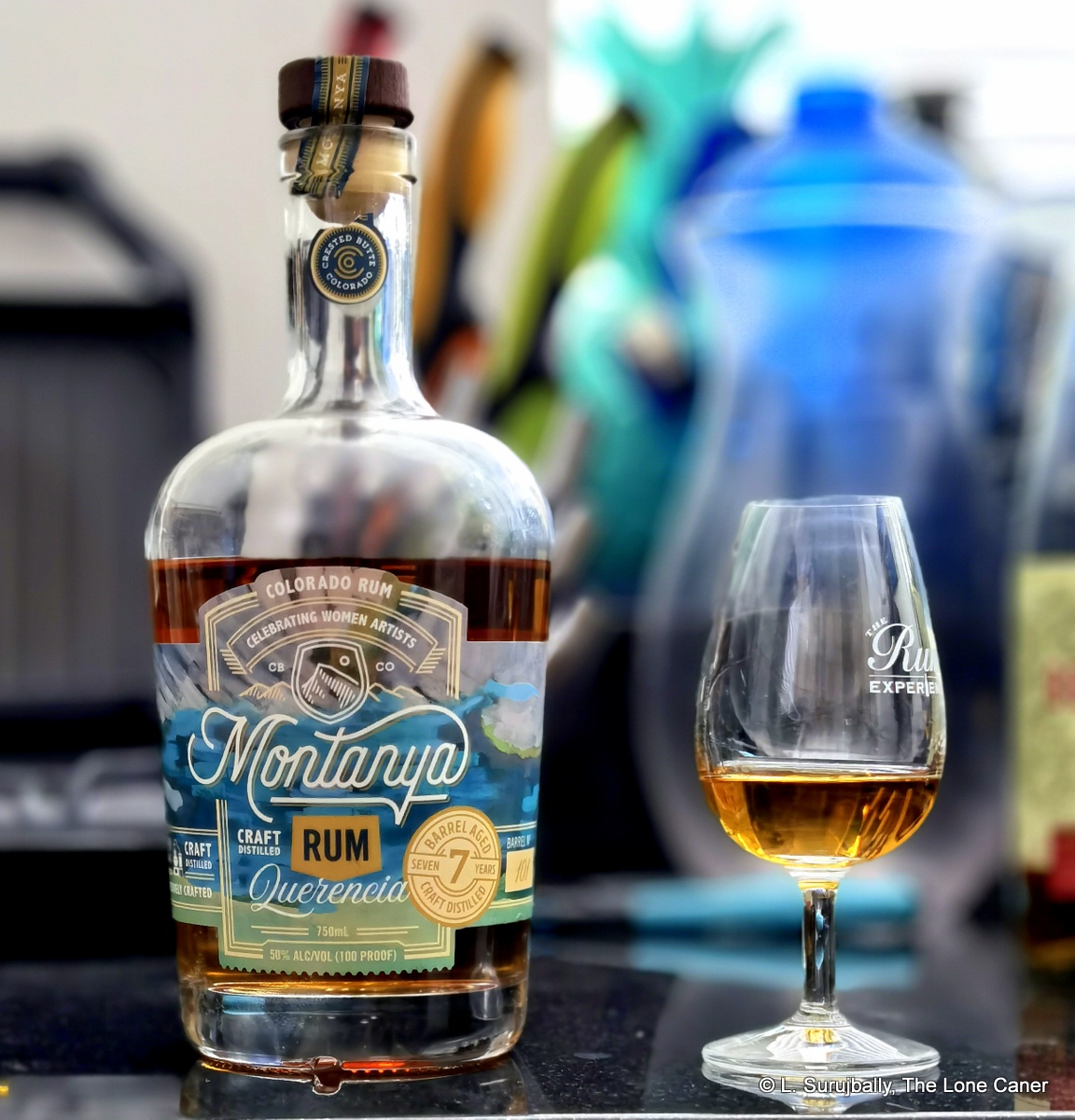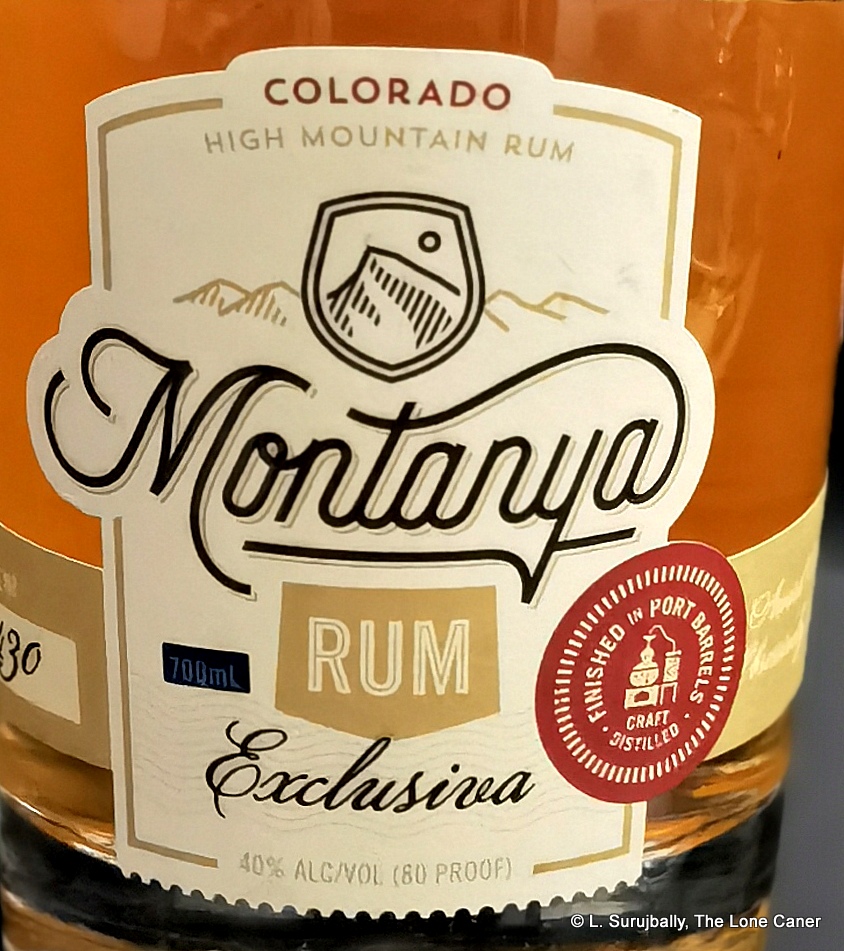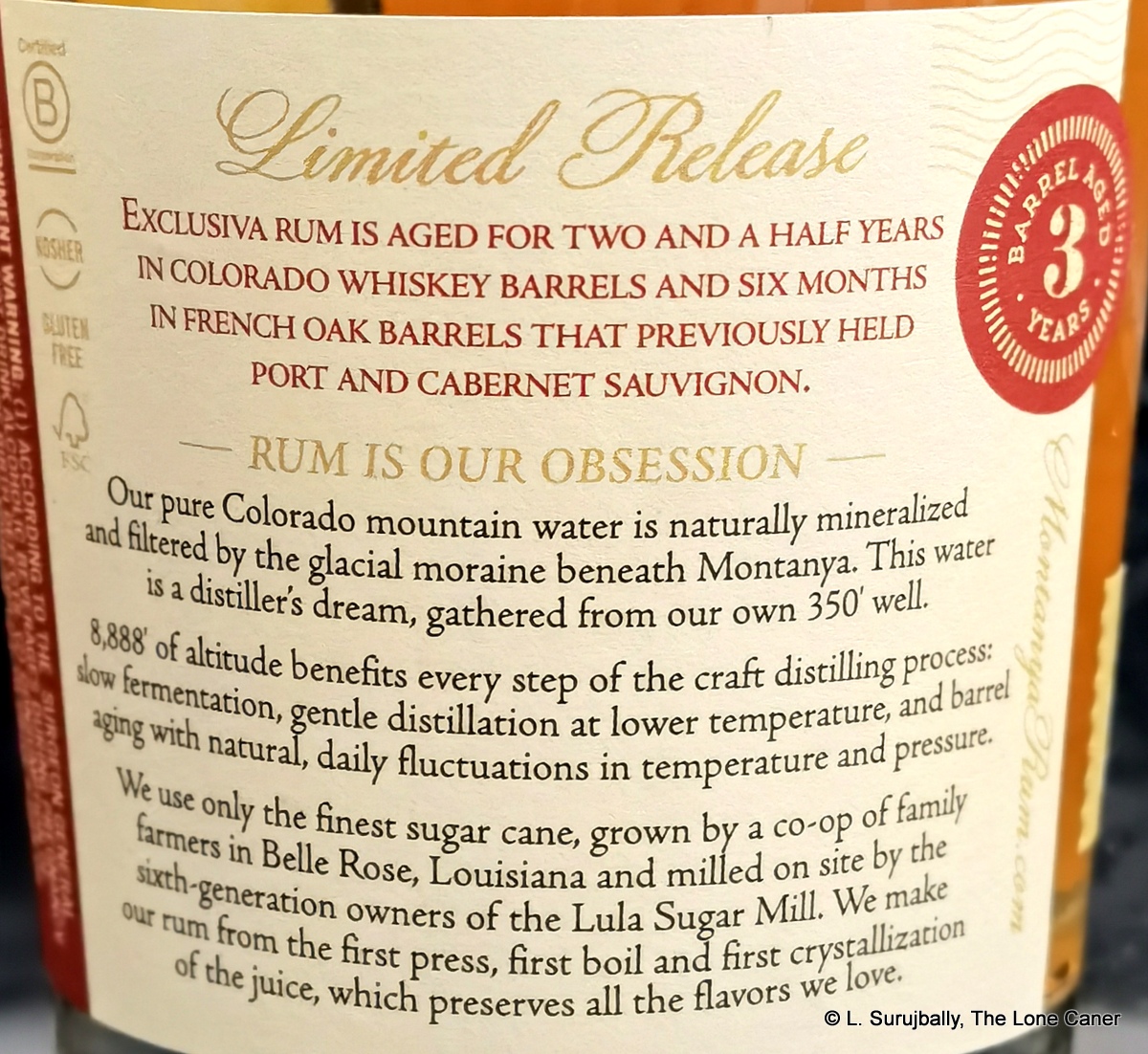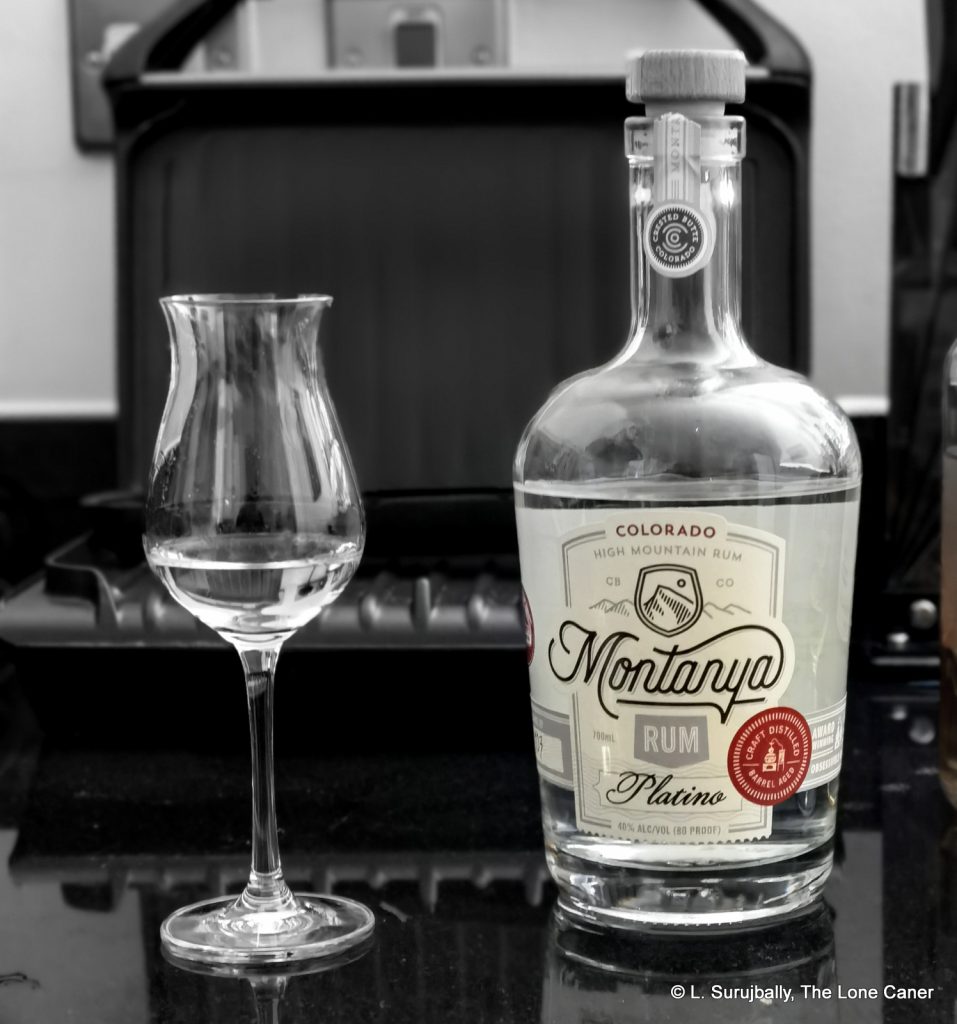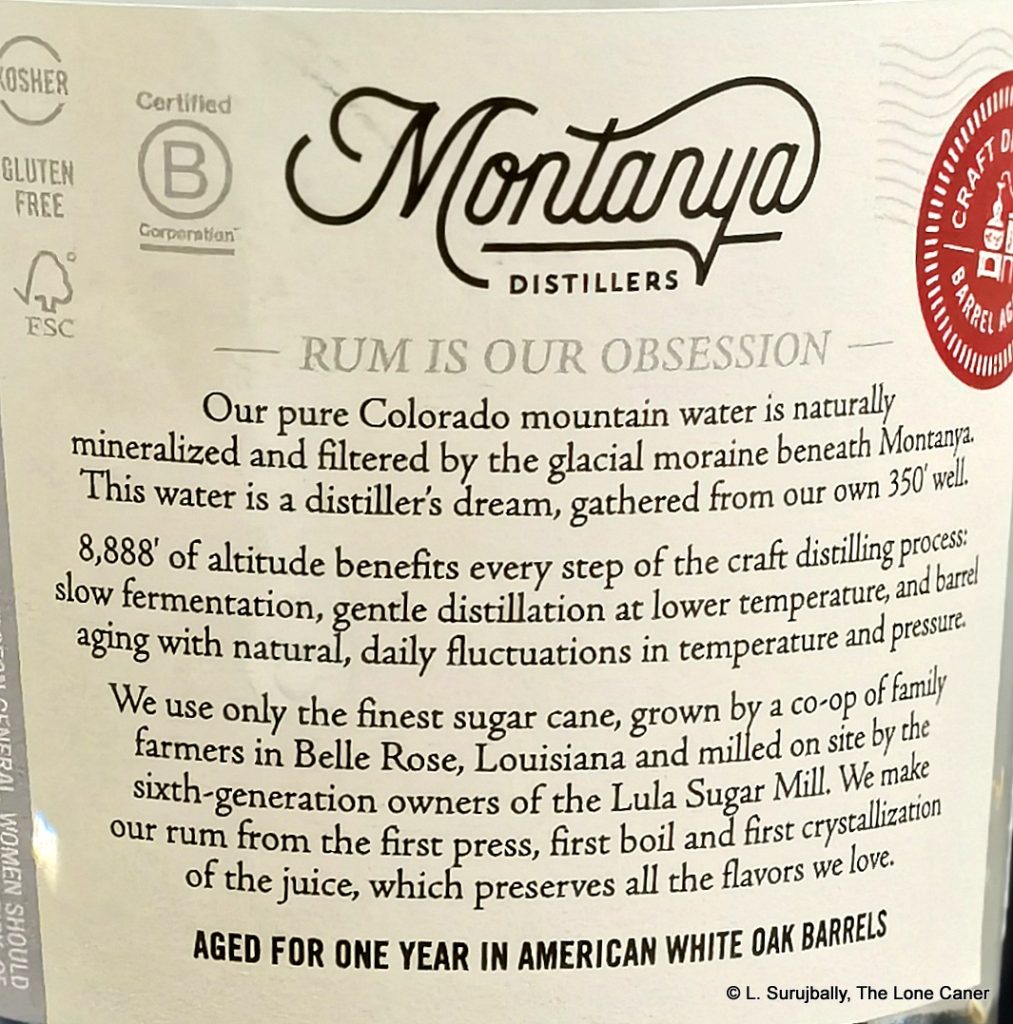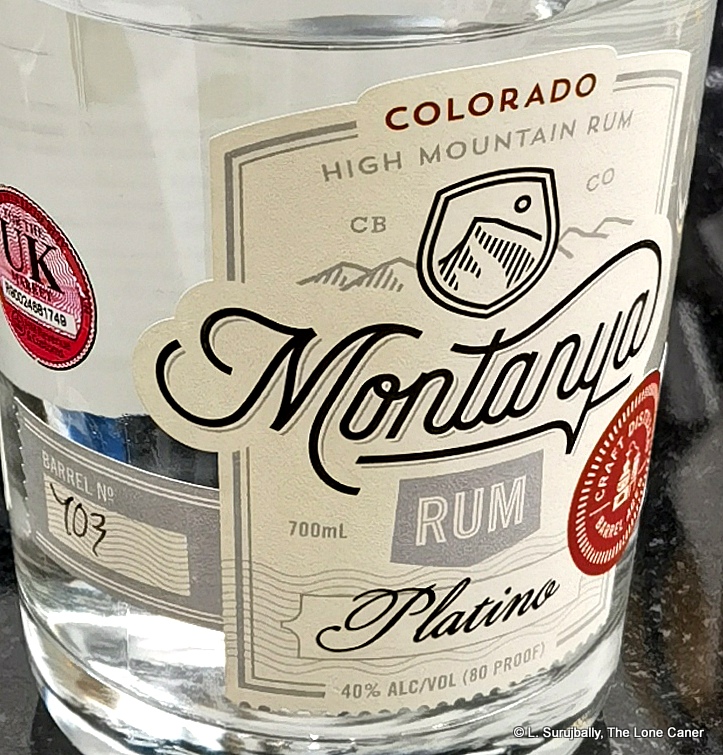This the third review of a rum from Montanya distillers after the interesting white Platino and the somewhat polarising 3YO “Exclusiva” (I never got around to the 4YO “Valentia” and the “Oro” is in the queue). Montanya is that forward looking Colorado-based distillery that made lots of rum waves in the last decade; founded in 2008, it was run by Karen Hoskin before the company was acquired by CRN Ventures in December 2023. Since CRN is made up of head distiller Megan Campbell, former head distiller and operations lead Renée Newton, and brand strategist Sean W Richards (who one imagines is there for marketing purposes) and only has this one asset, then I guess it was either a takeover or a divestment by Ms. Hoskin.
This rum, therefore, predates the change in ownership six-plus months ago, and if the almost complete lack of a redesign of the website aside from a notice of The Event (to say nothing of there being no mention of the Querencia at all) is anything to go by then I guess it’s business as usual. Although I must say that Karen had a visibility and presence in the universe which may have been underestimated as a selling tool, because not a whole lot has been heard about the company or its rums in a while.
Anyway. The Querencia is a rum named after an area in a bullring where the bull makes his defensive stand (interesting naming choice….). It is the only high proof Montanya has made, is seven years old (their oldest rum) and is, as noted above, curiously absent from their webpage – partly because it’s only sold at their company tasting room and partly because it’s a single barrel release (of 396 bottles) back in December 2021.
The production stats can be assumed to be pretty much on par with others in the portfolio: the Lula Sugar Mill co-op provides the complete residue from the minimal juice processing they do — raw unrefined molasses and raw unrefined granulated cane sugar — which then gets open-air fermented for around a week, before going through the 400L direct-fire Portuguese pot still (the newer US-made still that was installed in 2021 had not seen output at the time this rum was issued). The distillate was double matured: first aged in an American white oak barrel, that previously held Colorado Whiskey from Laws Whiskey House, and then finished for somewhat under a year in a Ex-Pedro Jimemez Sherry Cask. Final release bottled at 50%.
What then, is it like? If you recall, the Exclusiva was intriguing mishmash of competing aromas: the Querencia is similar but I think somewhat better: the ageing does show up and asks to be counted here and moderates what its younger sibling had: initial aromas are of black and red peppers, a sort of musky dirty dishwater hint (thankfully brief), followed by a smorgasbord of dust and cardboard, and a nice series of sharp and tangy fruits: strawberries, pineapples slices, ripe cherries and gooseberries, closing up shop with sage, dill and a pepper-heavy vegetable soup.
Tastewise, not very traditional either, just nicely assembled: cucumbers in cane vinegar, plus some minerally, ashy, iodine-y notes, well balanced off by 7-up, cola and dill. The taste is more sour than sweet, though there is enough of the latter as well (cherries, ripe mangoes, peaches in syrup, that kind of thing), even a dash of Thai peppers, and smoky red paprika. The finish doesn’t attempt anything new just brings the fruitier sweet and sour elements to a close and leaves without haste or bother.
Altogether, I’d say this is more elegant than any other Montanya offering, while not being as original. It cares enough to be an easier drink and edges into the wall rather than just ramming into it facefirst, so to speak. The sweet and slightly off notes, the sour and brininess, all mesh quite well. Even at 50% if feels softer and more palatable than many others with similar stats, and as a mixer or as a sipper, it works equally well.
Most of the time I have little patience for the way so many American rums either head straight for the cheap seats so as to max sales, or the boring middle ground in an effort never to offend even a single potential buyer. The best American rums resolutely go their own way and what we have here is one of those: an interesting, almost noble, attempt to defy the stereotype, to make an original rum to exacting standards, that will nevertheless please. Not one that everyone will love, perhaps, but for sure one that many will respect. I’m one of those.
(#1079)(85/100) ⭐⭐⭐½
Other notes
- A video recap can be found here.
- Production details updated a few days after posting to take into account Megan Campbell’s helpful follow up email
- The rum predates the December 2023 takeover and was made around 2022
- My deepest thanks to the boys at Skylark in the UK, who allowed me to hang around their crib and steal their rums, including this one.
- More complete company notes can be found in the Platino review
- Under new ownership, they will be releasing a pineapple habanero rum later this summer (2024); also issuing various cocktail bitters, as well as experimenting with different barrels for aging (e.g. grape brandy barrels).
